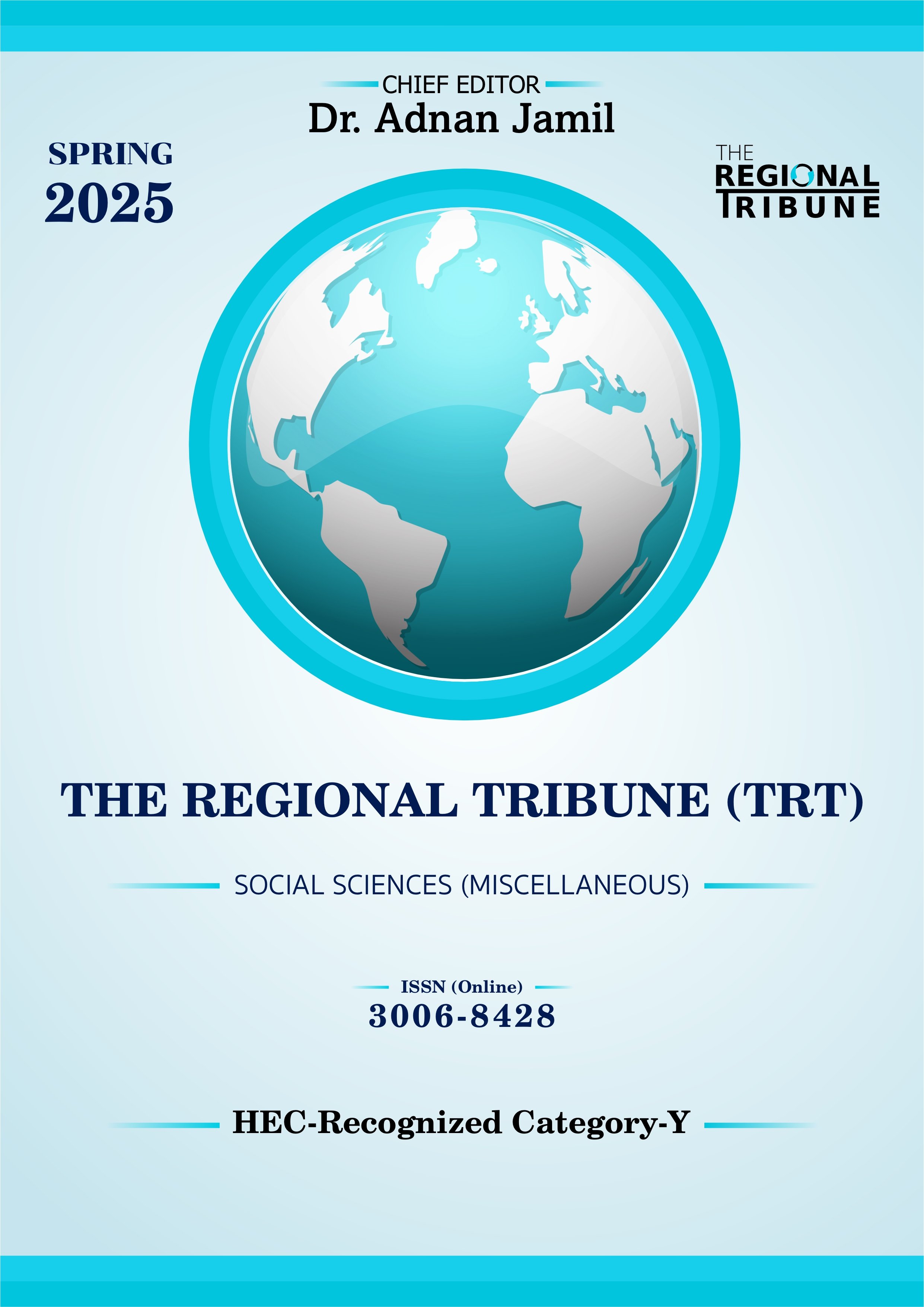Effect of Flipped Classroom on Students’ Deep Learning in English at Secondary Level
DOI:
https://doi.org/10.63062/trt/SG25.084Keywords:
Flipped, Classroom, Deep Learning, Education, Secondary School LevelAbstract
Main theme of the study was to investigate the effect of flipped classroom students ‘deep learning in English at secondary level. Major objective of the study was to find out effect of flipped classroom strategy students’ deep learning in the subject of English at 9th grade students. The study was experimental in nature and true experimental design pretest post-test design only was used to conduct the study. All 9th graders enrolled in Govt. Girls High School Faisalabad district Faisalabad was the target population of the study which was 142. 60 students were randomly selected as random selection. Researcher administered Students’ Cognitive Engagement Test on randomly selected 60 students. The students were split into control and experimental groups using the matched-pair technique. A research Instrument, Students’ Deep Learning Test (SDLT) was developed for the collection of data. Treatment (Flipped Classroom strategies) for six weeks was given to the experimental group. After completion of treatment posttest was administrated on both experimental and control groups. Collected data was analyzed using descriptive statistics as well as inferential statistics (One-Way ANCOVA). On the basis of findings, it was concluded that flipped classroom strategies had significant effect on deep learning in English of 9th grade students. On the basis of conclusions, it was recommended that i) educational institutions and curriculum developers should consider incorporating flipped classroom approaches into the teaching of English. The strategy has been shown to foster deep learning and improve students’ abilities to understand, summarize, and connect new knowledge with prior learning, and ii) additional studies should be conducted across different regions, subjects, and grade levels to validate the effectiveness of flipped classroom strategies and to explore long-term impacts on student learning outcomes, motivation, and academic achievement.
References
Awidi, I. T., & Paynter, M. (2019). The impact of a flipped classroom approach on student learning experience. Computers & Education, 128, 269–283. https://doi.org/10.1016/j.compedu.2018.09.013
Bergmann, J., & Sams, A. (2012). Flip Your Classroom: Reach Every Student in Every Class Every Day (pp. 120-190). Washington DC: International Society for Technology in Education.
Biggs, J., & Tang, C. (2011). Teaching for quality learning at university (4th ed.). Open University Press.
Brame, C. J. (2013). Flipping the classroom. Vanderbilt University Center for Teaching. Vanderbilt University. https://cft.vanderbilt.edu/guides-sub-pages/flipping-the-classroom/
Creswell, J. W. (2002). Educational research: Planning, conducting, and evaluating quantitative (Vol. 7). Prentice Hall Upper Saddle River, NJ.
Fraenkel, J. R., Wallen, N. E., & Hyun, H. H. (2012). How to desIgn and evaluate research In educatIon (8th ed.). New York: Mc Graw HIll.
Freeman, S., Eddy, S. L., McDonough, M., Smith, M. K., Okoroafor, N., Jordt, H., & Wenderoth, M. P. (2014). Active learning increases student performance in science, engineering, and mathematics. Proceedings of the National Academy of Sciences, 111(23), 8410–8415. https://doi.org/10.1073/pnas.1319030111
Herreid, C. F., & Schiller, N. A. (2013). Case studies and the flipped classroom. Journal of College Science Teaching, 42(5), 62–66. https://www.jstor.org/stable/43631584
Horn, M. B., Staker, H., & Christensen, C. M. (2015). Blended: Using disruptive innovation to improve schools. Jossey-Bass.
Hung, H. T. (2015). Flipping the classroom for English language learners to foster active learning. Computer Assisted Language Learning, 28(1), 81–96. https://doi.org/10.1080/09588221.2014.967701
Lo, C. K., & Hew, K. F. (2017). A critical review of flipped classroom challenges in K–12 education: Possible solutions and recommendations for future research. Research and Practice in Technology Enhanced Learning, 12(1), 1–22. https://doi.org/10.1186/s41039-016-0044-2
Marton, F., & Säljö, R. (1997). Approaches to learning. In F. Marton, D. Hounsell, & N. Entwistle (Eds.), The experience of learning: Implications for teaching and studying in higher education (2nd ed., pp. 39–58). Scottish Academic Press.
Mehring, J. (2016). Present research on the flipped classroom and potential tools for the EFL classroom. Computers in the Schools, 33(1), 1–10. https://doi.org/10.1080/07380569.2016.1139912
Milman, N. B. (2012). The flipped classroom strategy: What is it and how can it best be used? Distance Learning, 9(3), 85–87.
O’Flaherty, J., & Phillips, C. (2015). The use of flipped classrooms in higher education: A scoping review. The Internet and Higher Education, 25, 85–95. https://doi.org/10.1016/j.iheduc.2015.02.002
Roehl, A., Reddy, S. L., & Shannon, G. J. (2013). The flipped classroom: An opportunity to engage millennial students through active learning. Journal of Family & Consumer Sciences, 105(2), 44–49. https://www.learntechlib.org/p/154467/
Tucker, B. (2012). The flipped classroom. Education Next, 12(1), 82–83. http://educationnext.org/the-flipped-classroom/
Zainuddin, Z., & Halili, S. H. (2016). Flipped classroom research and trends from different fields of study. International Review of Research in Open and Distributed Learning, 17(3), 313–340. https://doi.org/10.19173/irrodl.v17i3.2274
Downloads
Published
Issue
Section
License
Copyright (c) 2025 Aqsa Saleem, Dr. Gulshan Fatima Alvi

This work is licensed under a Creative Commons Attribution-NonCommercial 4.0 International License.



